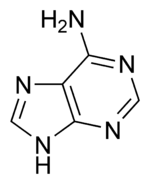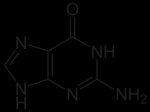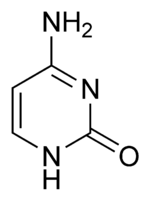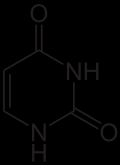![]()
![]()
![]()
Use LEFT and RIGHT arrow keys to navigate between flashcards;
Use UP and DOWN arrow keys to flip the card;
H to show hint;
A reads text to speech;
40 Cards in this Set
- Front
- Back
|
What does it mean to say that human beings are diploid?
|
They have two copies of the genome in each cell.
|
|
|
How many base pairs is the human genome?
What is the average length of a chromosome? |
3 billion base pairs. And all diploid cells have two copies (6 billion).
125 million base pairs long |
|
|
How many mature eggs develop from each diploid oocyte?
How many sperm develop from one diploid spermatocyte? |
Only ONE egg develops. 3 genomes worth of genetic material is lost in the polar bodies.
FOUR sperm come from one spermatocyte. |
|
|
What is non-disjuction?
What is an incorrect number of chromosomes called? |
Failure of chromasomes to segregate properly during mitosis, meiosis 1 or meiosis 2.
Anueploidy = wrong # chromosomes. |
|
|
What inhertitance pattern does hereditary nonpolyposis colorectal cancer follow?
|
HNPCC is autosomal dominant
|
|
|
When looking at a pedigree- what indicated autosomal dominant?
|
1. When both males and females have the disease.
2. When about 50% of the off-spring with an affected parent are also affected. CANNOT SKIP A GENERATION - if the next generation doesn't get it...it stops. |
|
|
What inhertitance pattern does Cystic Fibrosis follow?
|
Cystic Fibrosis is autosomal recessive.
Only occurs if both parents are carriers/affected. CAN SKIP GENERATIONS. |
|
|
What inhertitance pattern does Ehlers-Danlos syndrome follow?
|
BOTH autosomal recessive (mutation in procollagen aminopeptidase) cases
and autosomal dominant cases (mutation in alpha2). |
|
|
What inhertitance pattern does Lesch-Nyhan syndrome follow?
|
Lesch-Nyhan syndrome follows X-linked recessive pattern.
|
|
|
Explain what it means for a female to be mosaic for X-linked recessive traits.
|
Only one X gene is activated in each cell - and it can be a different homolog for any given cell. So in females, every cell can express only one allele of X-linked locus--> in the body as a whole, both alleles are expressed equally.
|
|

What is this?
How do you know? Where is it found? |
Ribose
There is a 2' OH group. Found in RNA. |
|

What is this?
How do you know? Where is it found? |
deoxyribose
There is do 2' OH group. Found in DNA |
|

What is this?
How do you know? |
Adenine
it has TWO rings. It has an NH2 group but NO carboxyl group. |
|

What is this?
How do you know? |
Guanine
It has TWO rings. One NH2 group and one carboxyl group. (More exciting groups than adenine) |
|

What is this?
How do you know? |
Cytosine
It has ONE ring. One NH2 group and one carboxyl group. It reminds me of a single ring-ed guanine. (and G and C go together...making 3 H bonds = most stable). |
|

What is this?
How do you know? |
Thymine
it has ONE ring. TWO carboxyl groups and a super sweet CH3 group. (only one like that). |
|

What is this?
How do you know? |
Uracil
It is ONE ring. Has TWO carboxyl groups (just like Thymine) but that's it. NO methyl group. |
|
|
Which base pairing is the most stable? Why?
|
G-C is most stable because it makes 3 H-bonds.
A-T only makes 2 H-bonds. |
|
|
What stabilizing factors keep DNA strands together?
|
1. hydrophobic stacking interactions of the base pairs.
2. H-bonds between bases. |
|
|
What is the difference between reannealing and hybridization?
|
reanneal means when two originally paired strands go back together as they were.
Hybridization means two previously unpaired strands go together. |
|
|
What happens in G1 phase of the cell cycle?
|
The cells have just gone through Mitosis and are taking a break before going through replication. MOST CELLS ARE IN G1 phase!
|
|
|
What is happening during S phase of the cell cycle?
|
cells have just left G1 and the DNA is replicating itself...producing sister chromatids. G2 follows S phase.
|
|
|
What happens during the G2 phase of the cell cycle?
|
During G2...the sister chromatids that were just made in the S phase are hanging out..getting ready to say goodbye.
|
|
|
What does DNA polymerase need to function?
|
DNAP needs a template strand AND A PRIMER (which can be DNA or RNA
|
|
|
Why doesn't the reverse rxn occur with DNAP?
|
When DNAP works - it pops off a PPi group. Then pyrophosphatase comes around and cleaves that...giving off energy needed to fuel polymerization.
KEEPING [PPi] LOW keeps this from reversing. |
|
|
How is the lagging strand replication different from the leading strand?
|
The lagging strand needs constant influx of new RNA primers bc it still needs to be made 5' to 3'.
|
|
|
What makes the RNA primers used to replicate the lagging strand?
|
DNA primase makes short RNA primers that are extended by DNAP making okazaki fragments. These are later replaced by DNA and joined together by DNA ligase.
|
|
|
What repairs DNA in replication when DNA Polymerase adds a mismatched base?
|
3'-5' Exonuclease activity of DNA polymerase hydrolyzes and releases a dNMP. The DNAP 5'-3' activity will add the right one.
|
|
|
What is a replication bubble?
|
It would take a week for DNAP to replicate an entire chromasome...so more than one DNAP is going at a time making "bubbles" that merge.
|
|
|
What is the every end of a chromosome called?
What prevents a lagging strand from becoming shorter each rep. cycle? |
A telomere.
Telomerase - it adds many copies of a simple sequence of nucleotides to the 3' end of a chromosome. Telomerase is a REVERSE TRANSCRIPTASE |
|
|
What is a topoisomerase?
What if a cell had no topoisomerase? |
It prevents supercoiling in DNA strands.
Without this the DNA strand would supercoil and replication would halt = cell death. |
|
|
What is cross-over?
When does it occur? Is it more common in maternal or paternal homologs? |
meiotic recombination.
Occurs between homologous chromatids during meiosis I. More common in maternal meiosis. |
|
|
When are two loci linked?
|
When they are the distance between two loci are 1cM apart.
Loci more than 1/3 of the length of the chromosome apart will not be linked. |
|
|
What is a haplotype?
|
A collection of alleles found together on a single chromatid.
|
|
|
How does unequal recombination cause alpha-Thalassemia?
|
Crossover between mispaired genes delete one of the alpha-globin genes from one chromatid and adds one to another. A child who inherits a single alpha-globin will make half as much globin as normal = mild anemia.
|
|
|
What are the two most commonly dispersed repeated DNA sequences in the human genome?
How did this happen? |
Alu family and the LINE family
these both result from intrachromatid homologous recombination. |
|
|
What is a transposon?
|
active transposable elements - they can generate copies of themselves that insert into the genome. THis is how Alu and LINE became so numerous in thee genome.
|
|
|
What is the purpose of VDJ-joining?
|
This is somatic rearrangement that B-cells do to make our immune system more specific.
|
|
|
What are TRECs?
What does absence of these in blood indicate in newborns? |
These are small circular DNAs corresponding to deleted regions of T-cell receptor genes.
Absence of these used to detect SCID (deaminase deficiency) in newborns. |
|
|
What is a copy number variation in DNA?
What detects these best? |
Every genome has changes in copy number of certain genes from problems with recombination.
aCGH (array comparative genome hybridization) detects this. |

